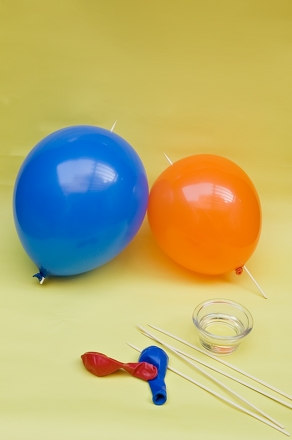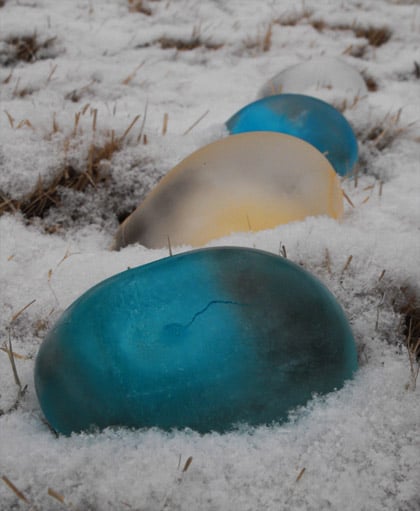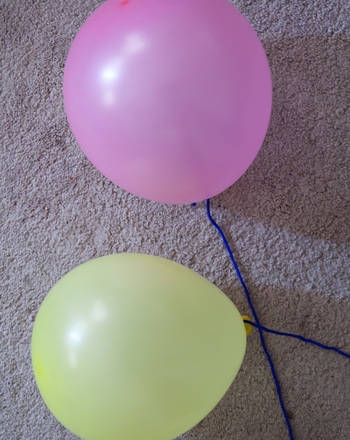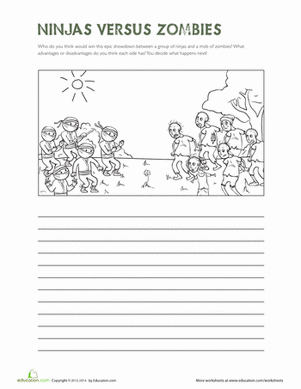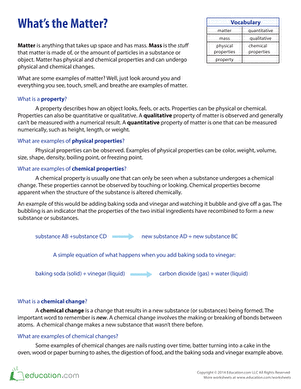Science project
Mylar vs. Latex Balloons
There are two main types of decorative balloons: Mylar® (a shiny, foil-like plastic made of polyester) or latex (a flexible material made from liquid rubber). Which one lasts longer? Why?
Problem:
Which type of balloon lasts longer: Mylar® or latex?
Materials:
- Three Mylar® balloons
- Three latex balloons
- Helium tank to fill up the balloons (or you can purchase them filled)
Procedure:
- Inflate one helium balloon and one Mylar balloon.
- Put both balloons in a room together. Observe how long it takes for them to lose altitude and drop to the ground, taking measurements each day.
- Repeat steps 1-3 for three more trails to ensure accuracy.
- Record your results.
- Research the physical properties and history of Mylar and Latex. Why might one have lasted longer than the other?
Results:
The latex balloon should have sunk to the ground after a couple of days. The Mylar® balloon should have stayed floating—in fact, they can float for as long as a week or two after being inflated.
Why?
Latex is porous—meaning it is filled with thousands of microscopic holes. When you inflate a latex balloon, you’ll notice that the latex gets thinner. What you aren’t able to see is the fact that you’re also stretching these tiny holes to be even wider! So what happens? The helium you inflated the balloon with gradually seeps out through these holes, and the balloon starts to sink to the floor.
Mylar® is a trademarked material invented by DuPont Teijin Films, and is sometimes used as a generic word to refer to many balloons manufactured using similar foil and polyester materials. Balloons made out of these types of material aren’t porous, they’re airtight—meaning gas isn’t able to escape through the material itself. Helium might be able to escape through the neck seal, but if it’s sealed tightly enough, this tends not to be a problem.
Education.com provides the Science Fair Project Ideas for informational purposes only. Education.com does not make any guarantee or representation regarding the Science Fair Project Ideas and is not responsible or liable for any loss or damage, directly or indirectly, caused by your use of such information. By accessing the Science Fair Project Ideas, you waive and renounce any claims against Education.com that arise thereof. In addition, your access to Education.com's website and Science Fair Project Ideas is covered by Education.com's Privacy Policy and site Terms of Use, which include limitations on Education.com's liability.
Warning is hereby given that not all Project Ideas are appropriate for all individuals or in all circumstances. Implementation of any Science Project Idea should be undertaken only in appropriate settings and with appropriate parental or other supervision. Reading and following the safety precautions of all materials used in a project is the sole responsibility of each individual. For further information, consult your state's handbook of Science Safety.

